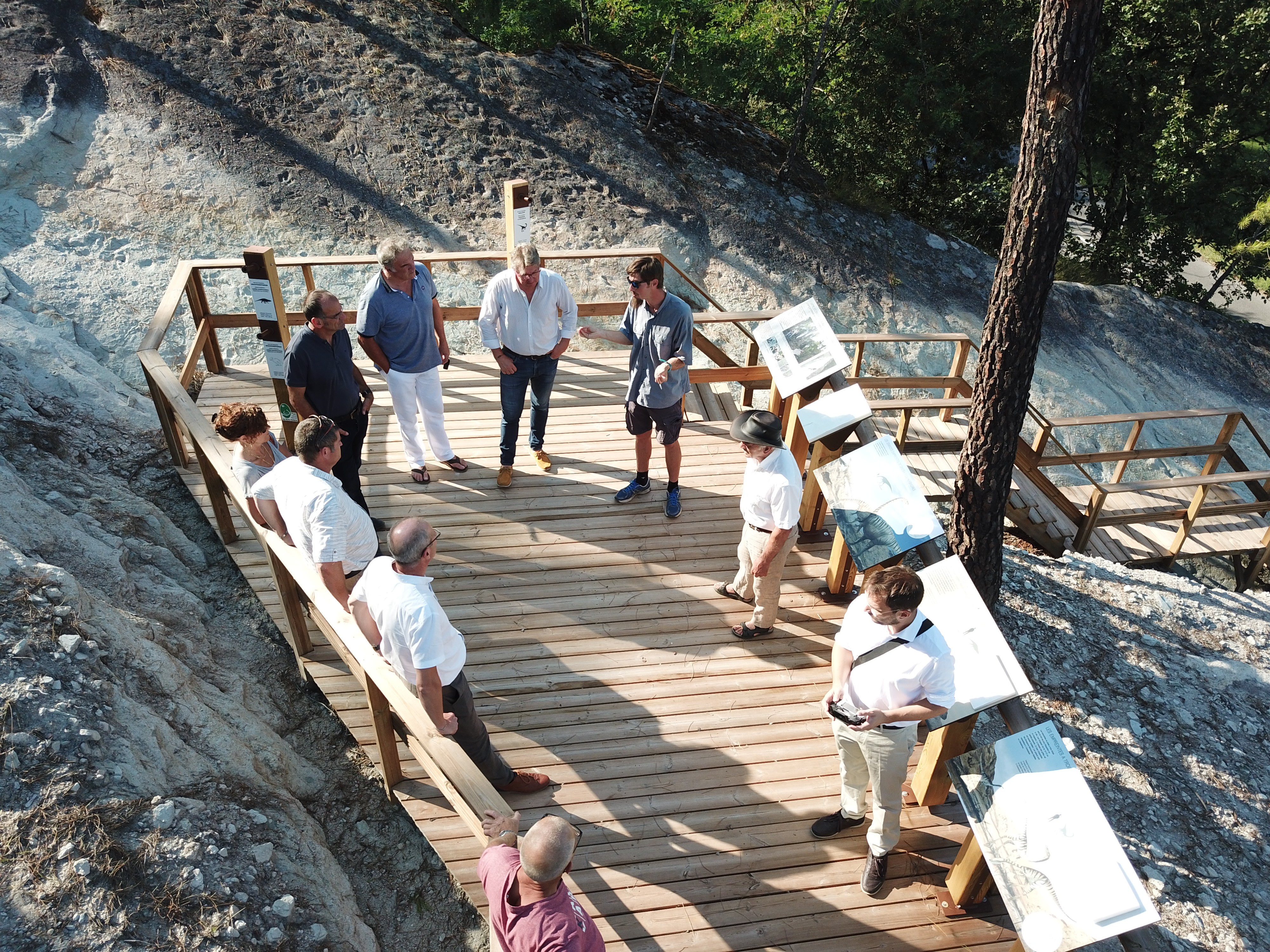
The dinosaur track Geosite of the Sartre
At that time Le Sartre was a floodplain in which numerous meandering rivers were flowing. The climate was subtropical to arid. The track-bearing surface was originally flat but was later tilted by tectonic movements.
Fossil traces are usually formed and preserved in fine-grained sediments. Le Sartre is a remarkable exception because the 300 tracks are preserved in very coarse rocks. Large reptiles actually walked over thin layers of silts and clays (mostly eroded now) but also deformed the underlying surface made of coarse sands (still visible today). Most traces you see today can thus be called “undertracks”.
Three-toed footprints of carnivorous dinosaurs
Tridactyl footprints are the most frequent type of traces at Le Sartre. These 10-15cm long tracks are called Grallator. They were made by bipedal theropod dinosaurs close to Coelophysis ou Liliensternus. These dinosaurs were 1-3 m long (6-10 feet) and weighted 20-40 kg (50-100 pounds).
Large footprint of herbivorous dinosaurs
Large footprints called Otozoum can be seen on the surface. They were made by large herbivorous prosauropod dinosaurs like Plateosaurus. These dinosaurs were 4-9 m long (13-30 feet) and weighted 1-3 tons (2000-7000 pounds).
Tracks of four-legged reptiles belonging to the crocodilian lineage
These footprints and handprints are named Brachychirotherium. They were made by four-legged pseudosuchian reptiles that are closely related to crocodiles. Their rarity at le Sartre illustrates the decline of these reptiles while the early dinosaurs were taking over terrestrial ecosystems.
Practical informations
Please do not to cross security barriers and be respectful of this patrimonial site and of the neighborhood.